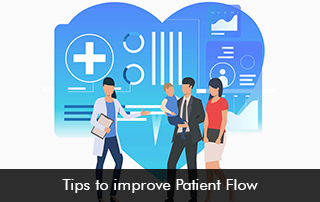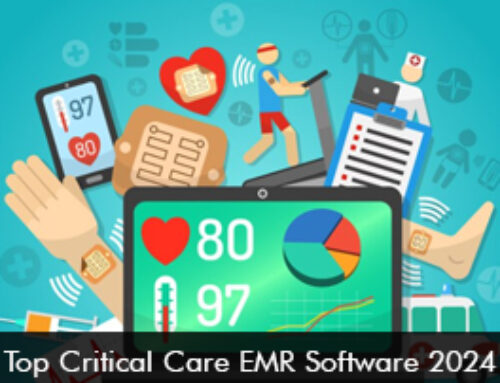Optimizing patient flow should be the key strategy of hospitals because it keeps patients satisfied when they are moving through the healthcare facility. Due to the pandemic hospitals and clinics have lost a lot of revenue which has hurt their financial health. The pandemic has contributed over $200 billion in losses for hospitals, according to the American Hospital Association. Increasing patient flow might be difficult, however, certain strategies can be implemented to enhance efficiency levels to optimize patient flow.
Why is Patient Flow Critical?
Patient flow is very important for the patient’s health, safety, and satisfaction. When the patient flow is optimized hospitals can avoid over-crowded spaces and lags in care delivery. Efficient patient workflows contribute to reduced wait times, a boost in productivity, and improved patient care which is the ultimate goal of any medical practice.
Issues when Patient Flow is not optimized
Numerous problems that affect patients and healthcare providers negatively might occur when the patient flow is not optimized. The following are some typical issues that may arise:
- Long wait times for patients in the waiting room.
- Due to poor patient flow, delays can arise which can frustrate patients and increase dissatisfaction scores.
- Quality of care is reduced as healthcare providers are overburdened which can lead to quick consultations and assessments.
- Staff members feel dissatisfied.
- When patient wait times are longer, patients are unhappy which can decrease patient volume and revenue for the healthcare organizations. The financial repercussions can be serious when the patient flow is not optimized.
Therefore, optimizing patient flow is critical to address the above-mentioned issues and keep patients satisfied and boost their experience.
5 effective Strategies to Deploy for Seamless Patient Flow
Utilize Data to Comprehend Demand Trends
Healthcare organizations need to gather and analyze data about patient inflow to help their staff members better understand staffing and scheduling requirements. When you have the data in hand staffing and scheduling needs can be met efficiently. A Practice Management (PM) Software solution can be leveraged by providing integrated data tracking and reports to help team members plan for optimized workflows.
Keep a Track of Patient Appointment Scheduling, Patient No-Shows, and Cancellations
Appointment cancellations and patient no-shows are big issues for hospitals as they can lead to a surplus in clinicians and staff and also reduce revenue. If cancellations are a consistent problem then practices can use the data to make informed decisions such as scheduling fewer providers and double-book appointments. Using data tracking tools can be helpful to track as many appointments are canceled.
Enhance Patient Engagement
Patient flow can be improved by enhancing patient engagement levels. Adapting the right patient engagement tools can help keep patients informed and have a satisfying healthcare experience. Automatic alerts and text messages or email reminders in the Patient Scheduling EMR Software system can combat the issue of canceled or missed appointments. The patient portal platform can be utilized to allow patients to fill online intake forms before their appointment which can reduce patient wait times and enhance overall patient satisfaction scores. Patient portal technology is a great way to empower patients all along their care journey.
Embrace Technology
Digital tools and healthcare technology can be deployed to automate manual tasks to enhance workflow efficiency and productivity. Bottlenecks can be eliminated if clinics and hospitals automate the check-in and check-out procedures. By improving the speed of non-clinical staff members, non-clinical services for patients can be improved.
Effective patient triage
Staff personnel can be trained to prioritize patients depending on the severity of their conditions through quick and accurate triage assessments. This facilitates proper resource and attention allocation and shortens wait times for urgent patients.
Importance of optimized patient flow
When patient flow is optimized the waiting room experience is improved as there is less overcrowding and stress for patients and staff members. Overall infrastructure costs can go down and patient frustrations can be kept at bay as they are satisfied throughout their patient journey.
Handling patient flow is a continuous process requiring communication across all hospital departments so they can accomplish goals by taking the necessary steps.







